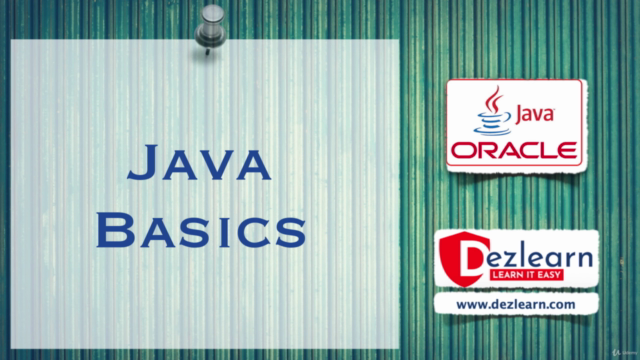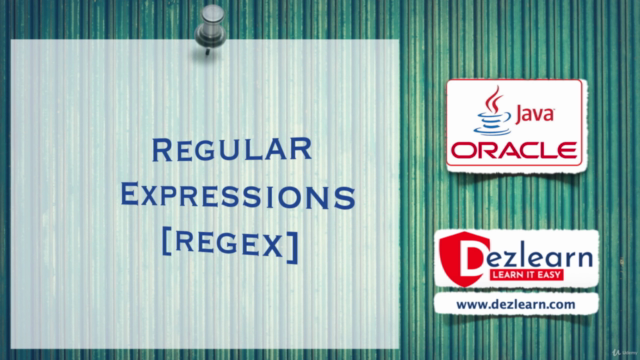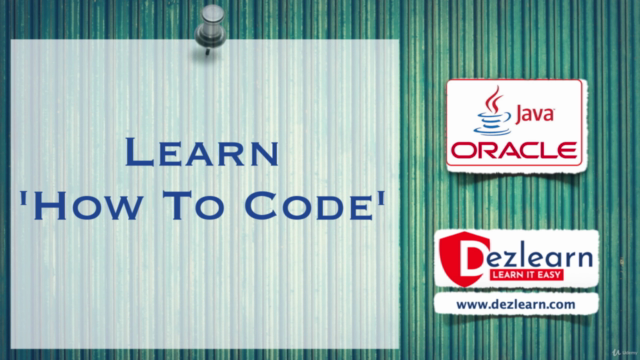The Complete Core Java Course : Learn to Code

Why take this course?
Based on the outline provided, you are looking to cover a comprehensive set of Java topics that span from basic data structures and regular expressions to advanced concepts like working with file systems. Here's how you can structure your learning path:
-
Arrays in Java:
- Understand the array as a fixed-size collection of elements (primitive types or objects).
- Practice creating, accessing, and manipulating arrays.
-
Array Object in Java:
- Learn how to use
Object[]to hold references to any kind of object.
- Learn how to use
-
Enhanced For Loop for Array Iteration in Java:
- Master the
for-eachloop for iterating over arrays.
- Master the
-
Hands-on Exercises on Array in Java:
- Apply your knowledge by solving problems involving arrays.
-
2-Dimensional Arrays in Java:
- Understand two-dimensional arrays and how they can be used to represent matrices or tables.
-
Hands-on Exercise on 2D Arrays in Java:
- Solve practical problems using two-dimensional arrays.
-
Array of Object in Java:
- Learn about multidimensional arrays that contain objects.
-
ArrayList in Java (ArrayList):
- Understand the dynamic array implementation and its use cases.
- Practice adding, removing, and accessing elements in an
ArrayList.
-
Structure of ArrayList in Java:
- Explore how
ArrayListis internally managed.
- Explore how
-
Linked List in Java (LinkedList):
- Understand the differences between
ArrayListandLinkedList. - Practice using
LinkedListfor its specific advantages.
- Understand the differences between
-
ArrayList vs LinkedList in Java:
- Compare the two to understand when to use each type of list.
-
List Iterator in Java:
- Learn how to iterate over lists using an
Iterator.
- Learn how to iterate over lists using an
-
Hash Set in Java:
- Understand the set implementation and its advantages for unique item storage.
-
Linked Hash Set in Java:
- Learn about a set that maintains insertion order.
-
Tree Set in Java:
- Understand a set that is sorted by natural ordering.
-
Iterating Over Sets in Java:
- Practice iterating over sets with different implementations.
-
Hash Map in Java:
- Learn about the basic map implementation.
-
Tree Map in Java:
- Understand how a tree maps maintains keys in sorted order.
-
Iterating Over Maps in Java:
- Practice iterating over maps and extracting data.
-
Regular Expressions in Java:
- Learn the syntax and usage of regular expressions.
- Solve problems that require pattern matching or string validation.
-
Introduction to RegEx in Java:
- Understand the basics of regular expressions.
-
Quantifiers, Character Classes, Groups, etc.:
- Dive deeper into advanced regex patterns and their applications.
-
Working with File Systems:
- Understand how to read from and write to files in Java.
- Practice working with different file operations.
-
Assignments with Answer Keys:
- Complete the provided assignments to solidify your understanding.
-
Exception Handling and Concurrency:
- Learn how to handle exceptions and use concurrency features in Java.
-
Spring Framework and JPA:
- Explore the basics of building web applications with Spring and data persistence with JPA.
-
Integration Testing and Mocking:
- Understand how to write tests for your Java code, especially when dealing with complex dependencies.
-
Spring Boot:
- Learn how to quickly develop and deploy scalable Java applications with Spring Boot.
-
Web Services with RESTful APIs:
- Understand how to create web services using the Spring MVC framework.
-
Security Best Practices:
- Ensure your code is secure against common vulnerabilities.
-
Spring Security:
- Learn how to use Spring Security for securing applications.
-
Full Stack Development with Java:
- Combine all the learned concepts to build a full-fledged application, ideally a RESTful API backed by a relational database.
Follow these steps, and you'll have a solid foundation in Java programming, data structures, and web development. Remember to practice regularly, as this will greatly enhance your understanding and ability to apply the concepts you learn.
Course Gallery




Loading charts...